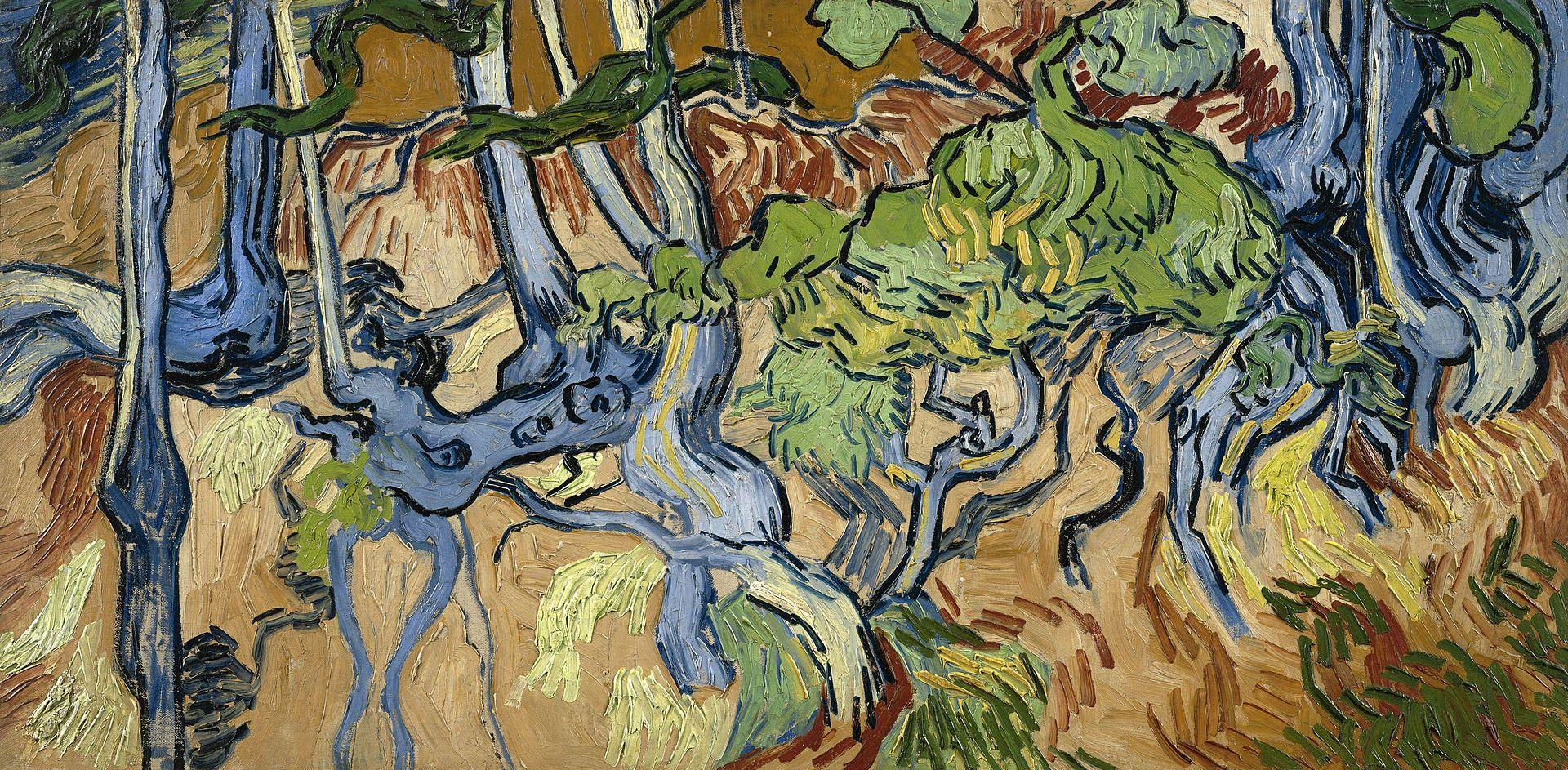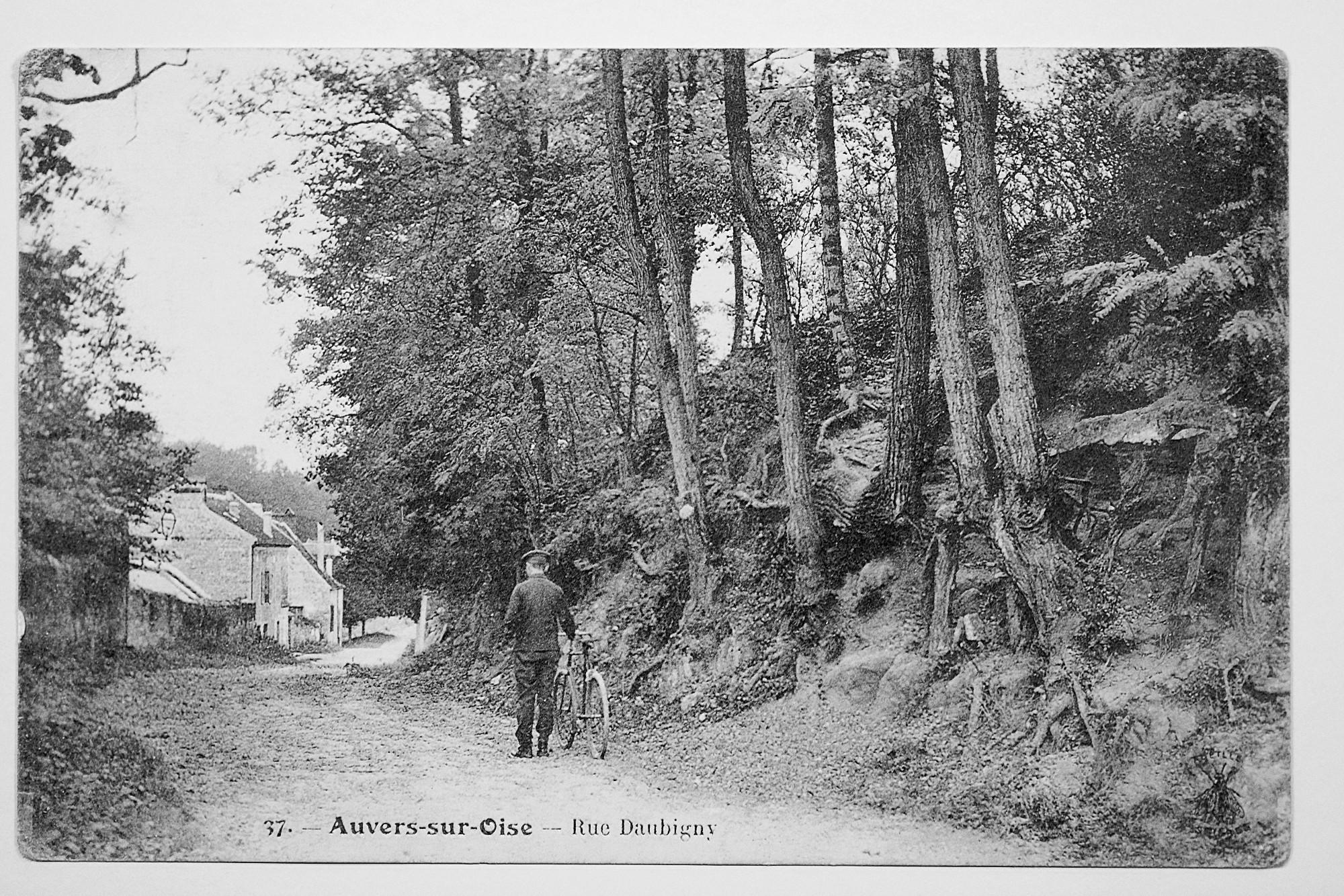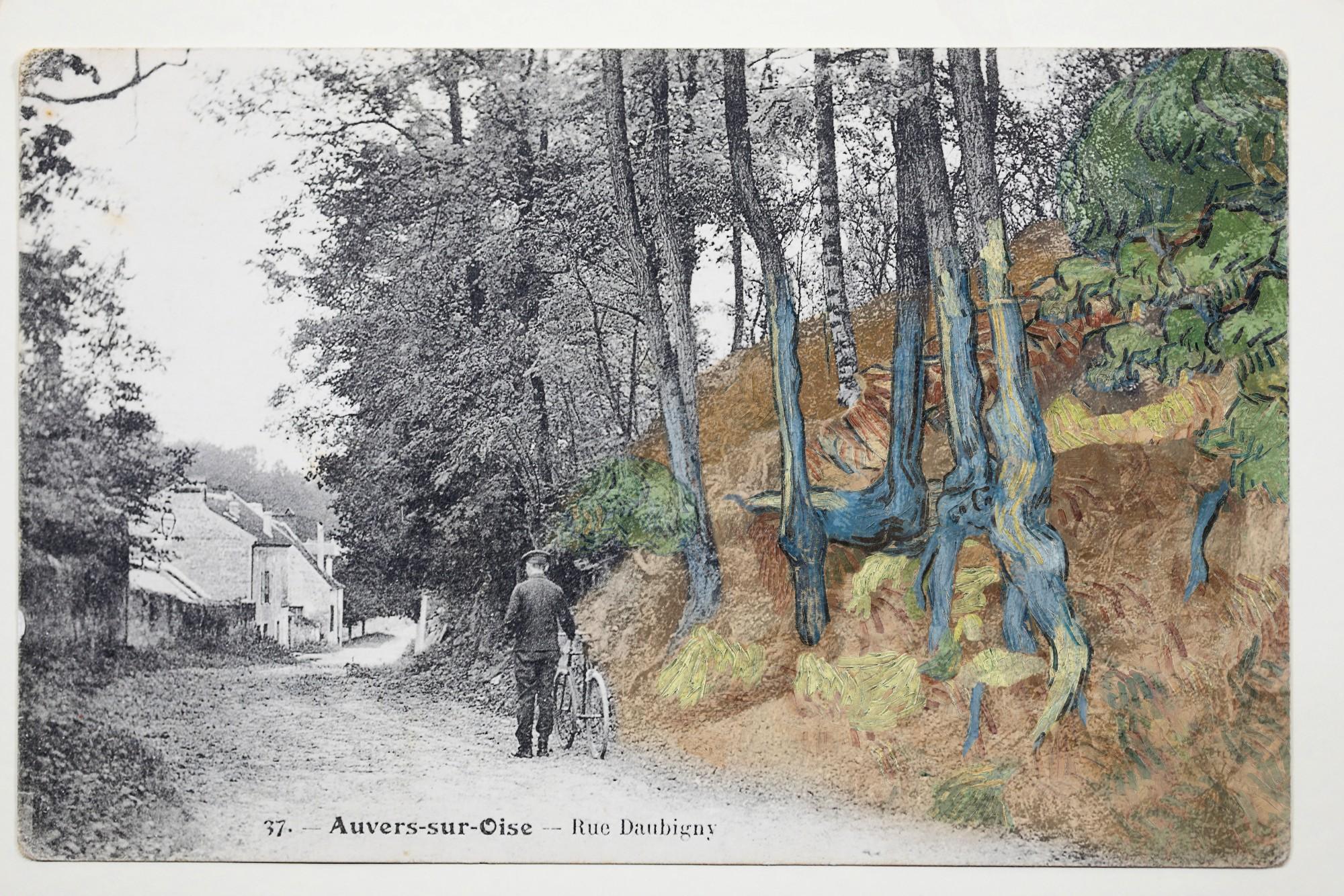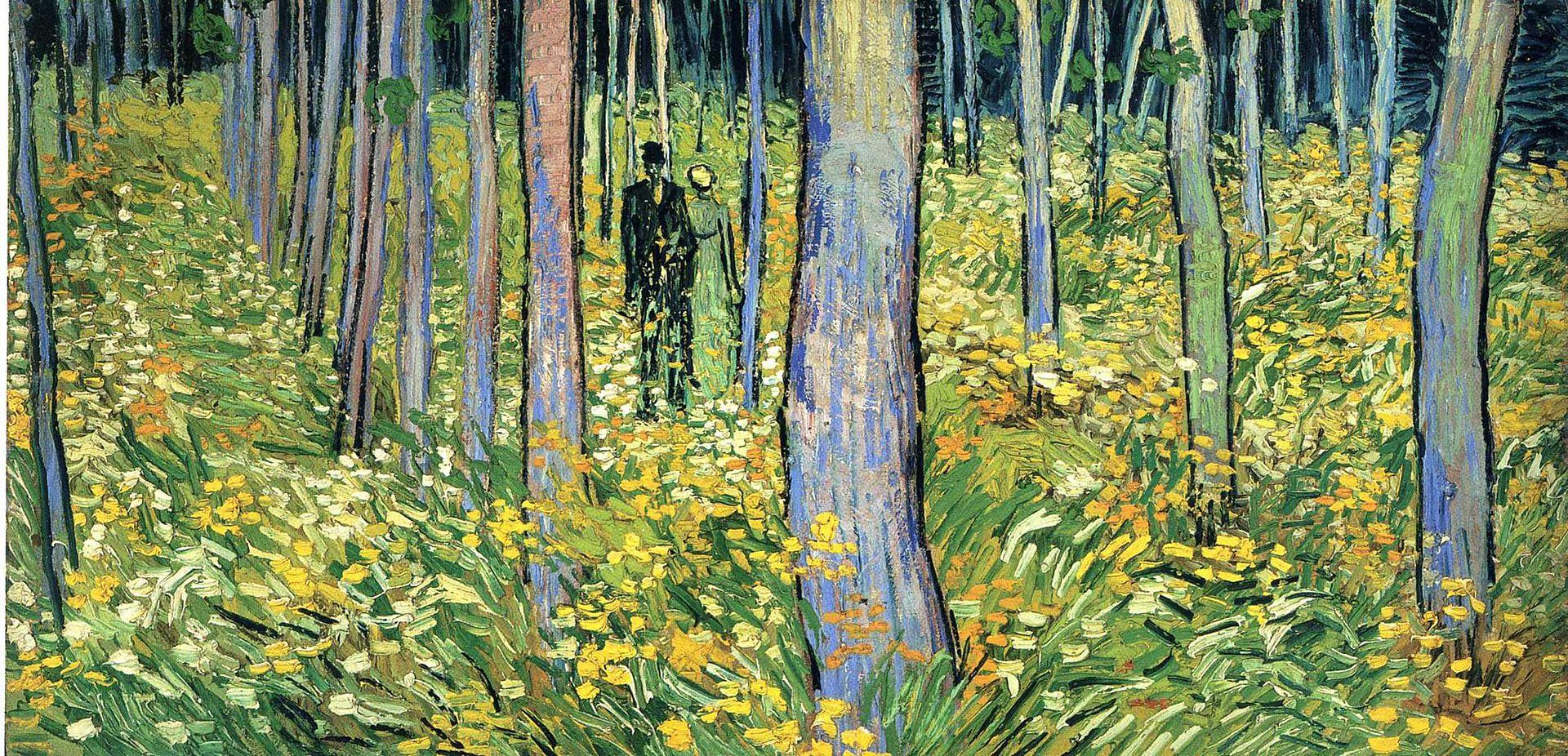The mysteries of the life and inner-working of Vincent van Gogh have captivated art lovers for over a century. In 2020, a researcher with a keen eye made a discovery that gives us further insight into his last days and final masterpiece.
Tree Roots was painted in July 1890 when Van Gogh was living in Auvers-sur-Oise, France. Many scholars believe it to be the last work he painted. The close-up image of the tangled and twisted root forms is a sous-bois scene, a French term for undergrowth, which was a popular subject with Impressionists and artists from the Barbizon School.
The subject is not easily identifiable, making the work one of Van Gogh’s most abstract. Rather than the landscapes or still lifes we are accustomed to with Van Gogh, this close-up portrayal of the forest floor makes us focus on the shapes, lines, and colors of the composition itself.
But the intimate scope of the painting didn’t stop Wouter van der Veen, the scientific director of the Institut Van Gogh, from recognizing it in a vintage postcard dating from 1900 to 1910. The scenic photo shows a man walking a bike on the rue Daubigny in Auvers-sur-Oise, near Auberge Ravoux, the inn where Van Gogh stayed for several months before his death.




























